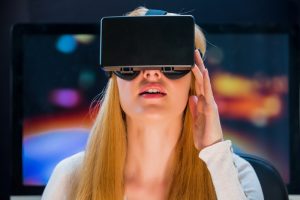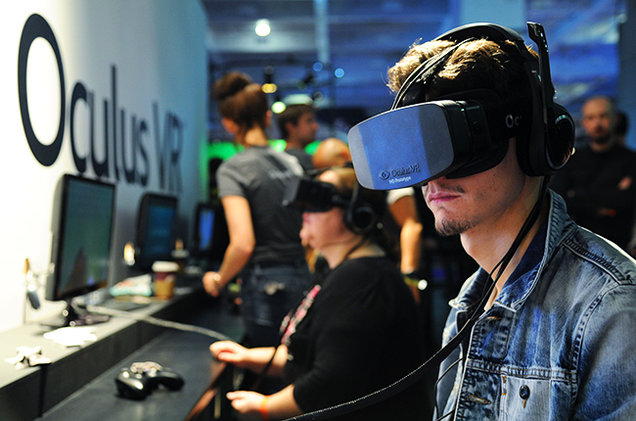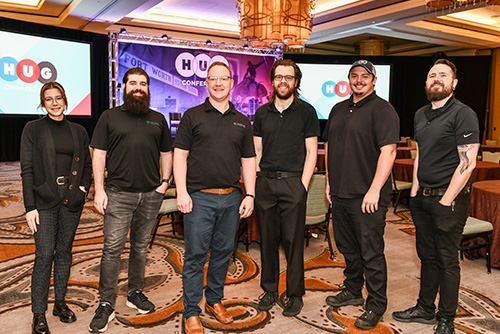
Many market analysts are not yet fully aware of the potential for live 360 video and its applications in both social media marketing and event production. But if you’re in the future-of-event-technology conversation, here’s your ice-breaker: it’s estimated that in a few years the market potential for live 360 video will be in the trillions of dollars. When it comes to the power of virtual reality, there are few technologies that can compare. Here’s a quick look into what live 360 video is, and how it’s likely to play a role in the future of your business.
Bottom Line
This is all about your audience’s emotional takeaway. Live 360 video fits right into the trend of giving away an experience rather than free merchandise. Basically, the viewer wears a VR headset or views the feed from a computer and sees a live, full 360-degree view of the subject. But the coolest, and most important part? By turning their head (headset) or using arrow controls, the audience moves about the 360° space at their own will. It’s the closest thing we’ve got to actually teleporting. The concept behind virtual reality and live 360 video is the idea that you can deliver a completely unique custom-designed experience to your audience that can be a vital tool in forging a meaningful relationship with potential clients.
What is Live 360 Video?
The best way to describe 360 live video really is, like I said above, teleportation. Basically, a camera with a bunch of lenses records every angle of a space. Meanwhile, viewers can control the point of view by moving their head (if they’re wearing a headset) or moving a cursor (computer or mobile device). It’s kind of like remotely operating a camera. Like Google Street View for a live, specific, targeted experience.
When you don a virtual reality headset that’s connected to a 3D 360 Video camera you are essentially removing yourself from where you are and then placing yourself exactly where the camera is. Suddenly, you are totally immersed in a new surrounding. You can show your audience animations and renderings of a place all you want, but what if you could actually take them there? If you’re still doubting, rest assured that virtual reality is truly a see-it-to-believe-it phenomenon.
Here’s an example of how 360 video works:
The application of 360 live video above is a fantastic example of using technology to bridge the gap between their audience’s perspective of refugee camp life and reality. If part of your strategy is to raise awareness of an issue, 360 live video offers a nearly “too close for comfort” experience. It brings the audience up close and personal and demands their attention. Where still images and text can tell a story, 360 live video puts a person in the story.
The live aspect of live 360 video also creates a sense of urgency, almost making your video feel like an event in itself. If you market the video ahead of time, audiences should feel motivated to tune in so they’re living the moment at the same time as everyone else.
Recommended reading: The Different Types of Stories You Can Tell in a Video
Oculus Rift: Changing the Content Game
In 2014 Facebook acquired the virtual reality startup Oculus Rift for $2 billion — that’s two Instagrams. Virtual reality is the platform for future content creators and marketers, and it enables big brands to connect with their audiences in a more personable manner. Stories that were not easily told before now have a new point of entry for consumers. Just by putting on goggles at home, a person will be able to have a face-to-face interaction with your brand.

All different types of companies are finding inventive ways to use VR and 360 video to bring their audience closer to their brand.
360 Video and Virtual Reality Trends for 2019
With live 360 video and virtual reality taking over the digital landscape, it’s no wonder groundbreaking trends surface each year. In 2019, businesses can expect increased VR use for teaching and training employees in the construction, healthcare, or aerospace industries, eliminating any risk previously involved. There are also increased opportunities for virtual reality in consumer markets, where headsets like Vive and Oculus can bring together users all over the world for immersive entertainment experiences.
Suggested blog post: How Are Brands Using Virtual Reality to Engage Their Customer Base?
Editor’s Note: This post was originally published in 2016 and has been updated for accuracy and relevancy.
Add 360 Videos and Virtual Reality with TalkingTree Creative
It’s time to embrace immersive video technology! We can support you from creation to distribution for any virtual or augmented reality project. Get in touch with us today!




